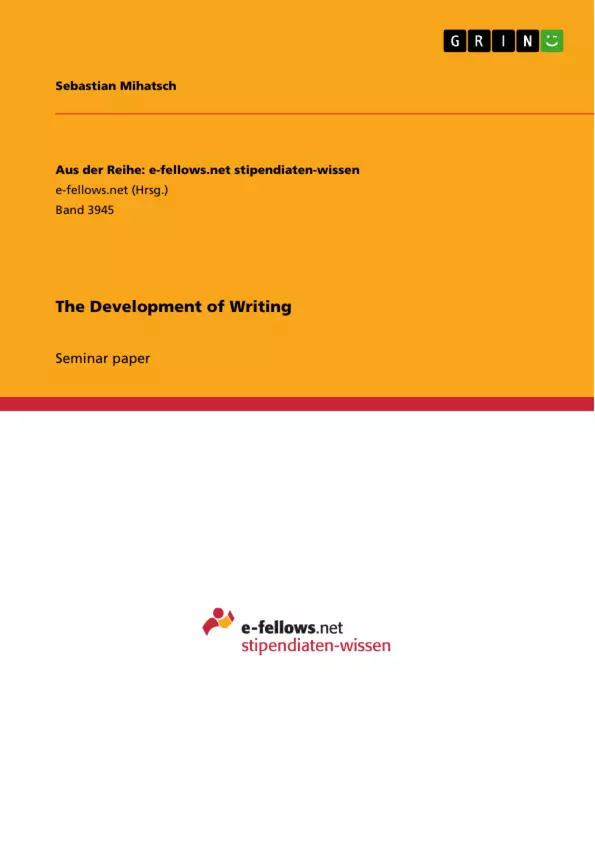The aim of this paper is to describe the various systems employed to convey meaning in written form, their development and possible advantages or disadvantages they might imply.
According to Wallace L. Chafe (1971), language can be defined as “a system which mediates, in a highly complex way, between the universe of meaning and the universe of sound”. The technology required to record the sounds of a language, however, was invented quite recently in comparison to the long history of mankind. Therefore, in order to document thoughts, ideas or experiences, humans had to fall back to other means, that is to say writing, in an attempt to record otherwise transient utterances. Nevertheless, devising as well as using a system to document language is by no means an easy task and, thus, analysing the process behind this development deserves special attention.
Table of Contents
- Introduction
- Cuneiform
- Egyptian Hieroglyphic Writing
- The Alphabet
- Pinyin and Romaji
- Conclusion
Objectives and Key Themes
This paper explores the development of writing systems throughout history, aiming to understand how humans have devised methods to record and communicate language in written form. The paper examines the origins, evolution, and advantages and disadvantages of various writing systems.
- The emergence and development of early writing systems like cuneiform and Egyptian hieroglyphs
- The transition from pictographic to ideographic and syllabic writing systems
- The influence of writing systems on language development and cultural evolution
- The role of graphology in understanding the relationship between language and its written representation
- The challenges and complexities of representing spoken language in written form
Chapter Summaries
- Introduction: This chapter introduces the concept of language as a system that bridges the gap between meaning and sound. It highlights the importance of writing as a means of documenting language and explores the complexities involved in developing and using writing systems.
- Cuneiform: This chapter examines the origins and development of cuneiform writing, focusing on its origins in ancient Mesopotamia and its evolution from pictographic to ideographic and syllabic systems. It explores the use of cuneiform for administrative records and its role in the spread of writing to other languages.
- Egyptian Hieroglyphic Writing: This chapter delves into the development of Egyptian hieroglyphs, emphasizing their unique threefold nature, including ideograms, phonograms, and determinatives. It discusses the evolution of hieroglyphic writing from a more pictorial style to a more cursive form used for everyday purposes.
Keywords
The primary keywords and focus topics of this work include graphology, writing systems, cuneiform, Egyptian hieroglyphs, pictographic writing, ideographic writing, syllabic writing, logograms, phonograms, determinatives, language development, and cultural evolution.
- Citation du texte
- Sebastian Mihatsch (Auteur), 2021, The Development of Writing, Munich, GRIN Verlag, https://www.grin.com/document/1127212



